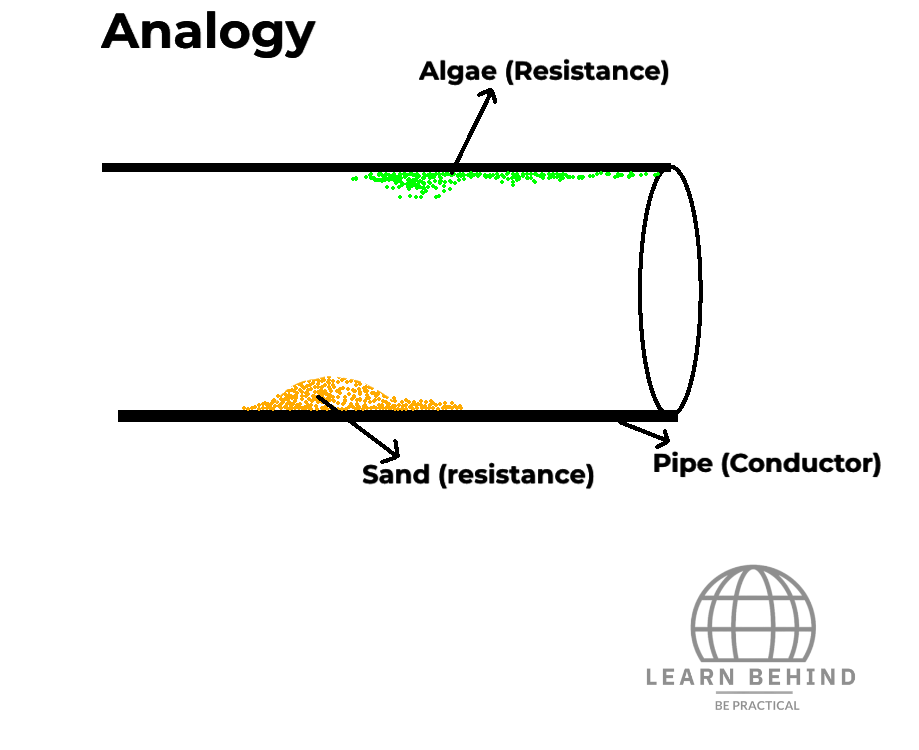Home
Tutorial's
Image collection
Calculator
Projects
MCQ's
3d Models
Invention Hub
How it works
Download Our app
(Last updated on 12-09-2024)
Module 7: Resistance
Resistance is a property of a substance (material) that opposes the flow of current through it. This opposition is occurs because of obstacles in conductors like atoms and molecules, which oppose the flow of electrons. Some substances (e.g., metals such as silver, copper, aluminium etc.) that offer very little opposition are called conductors, and some substances that offer a high opposition to the flow of electrons are called insulators, e.g., glass, rubber, wood, etc.
In conductors, the current flow is opposed due to collisions of electrons with atoms and molecules. These collisions dissipate some amount of heat.
Unit of resistance :The unit of resistance is ohm and is represented by the symbol Ω

7.1 : Calculation of Resistance
The resistance depends on many factors, such as nature of material, physical dimension, and temperature. The resistance R of a conductor is
1.Directly proportional to length of the conductor, l
2. Inversely Proportional to area of cross - section , a
3.Depends on nature of material
4. Depends on its operating temperature
And it is expressed as
R=
Where ρ (Rho) is called resistivity or specific Resistance of the material and the value is depend upon the nature of the material and temperature.
7.2 Specific Resistance
The resistivity or specific resistance has a defined value, which depends on the nature of the material. For example, the resistivity of copper is 1.7 x 10-8 Ω -m . It means that if you have a copper of length 1 m and area 1 m, then the resistance of that copper is 1.7 x 10-8 Ω -m.
The units of resistivity are ohm-m (Ω -m).
7.3 Effect of temperature on Resistance
The resistance will not be the same from material to material due to the resistance changing with a change in temperature. The effect of temperature on resistance varies according to the type of material.
1. The resistance of metals increases with increases in temperature; they have a positive temperature coefficient of resistance.
2. As temperature rises, semi-conductors' resistance reduces. These materials have a negative temperature coefficient of resistance.
3. The resistance of insulators decreases with the increase in temperature. Hence, these materials have a negative temperature coefficient of resistance.
4. The resistance of the alloy increases with the rise in temperature, but the increase is small and irregular.
5. The resistance of an electrolyte decreases with the increase in temperature; they have an almost negligible coefficient of resistance.
Related articles
